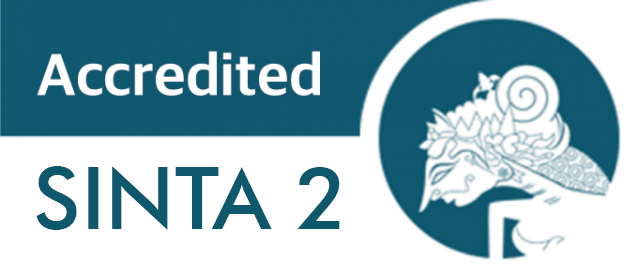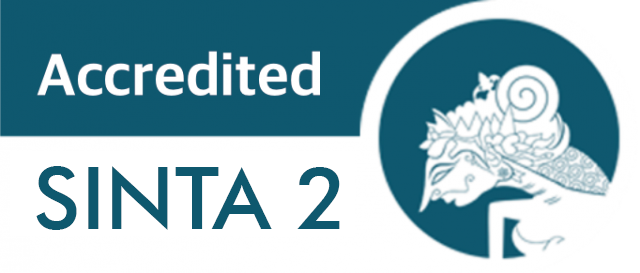Neuromodulation Intervention in Resistant Depression
Downloads
Treatment-resistant depression occurs in about 20% of all Major Deppresion Disorder patients. In addition to the high cost of treatment to be borne, the high functional disability rate, the suicide rate triggered by the disorder is also quite large. Various efforts were made to overcome this, including dose optimization and duration of treatment, substitution of drug selection, combination therapy and augmentation using non-antidepressant drugs and bilateral electroconvulsion therapy. Current pharmacological options according to some experts are no more efficacious than the 1950s. Clearly, a novel therapeutic approach to treatment - resistant depression disorders is urgently needed. Over the last few decades, there has been a renewed interest in focal neuromodulation as a treatment approach for neuropsychiatric conditions. The neuromodulation-based interventions discussed include Transcranial Magnetic Stimulation (TMS) and Transcranial Direct Current Stimulation (tDCS), which are non invasive intervention therapy and Vagus Nerve Stimulation (VNS) and Deep Brain Stimulation (DBS), which are invasive interventional therapies. This literature review proves that, although today only TMS and VNS have been approved for use by the Food and Drug Administration (FDA) in the United States, but neuromodilation-based intervention therapy has proven to be promising as a more effective and efficient resistant depression therapy in the future.
Lipsman N, Sanjar T, Downar J, Sidney H, Kennedy, Lozano A, et al. Review Neuromodulation for treatment-refractory major. 2014;186(1):33–9.
Kessler RC, Berglund P, Demler O, Jin R, Koretz D, Merikangas KR, et al. The Epidemiology of Major Depressive Disorder. Natl Comorbity Surv Replication. 2003;289(23):3095–105.
Fava M, Davidson KG. Definition and epidemiology of treatment-resistant depression. Psychiatr Clin North Am. 1996;19(2):179–98.
Berlim MT, Turecki G. Definition, assessment, and staging of treatment-resistant refractory major depression: A review of current concepts and methods. Can J Psychiatry. 2007;52(1):46–54.
Mrazek DA, Hornberger JC, Altar CA, Degtiar I. A Review of the Clinical, Economic, and Societal Burden of Treatment-Resistant Depression: 1996–2013. Psychiatr Serv [Internet]. 2014;65(8):977–87.
Fornaro M, Giosuè P. Current Nosology of Treatment Resistant Depression : A Controversy Resistant to Revision. Clin Pract Epidemiol Ment Heal. 2010;6:20–4.
Souery D, Amsterdam J, Montigny C De, Lecrubier Y, Montgomery S, Lipp O, et al. Treatment resistant depression : methodological overview and operational criteria. Eur Neuropsychopharmacol. 1999;9:83–91.
Stahl SM. Stahl's Essential Psychopharmacology. Fourth Edi. New York: Cambridge University Press; 2013. 535 p.
Sharma M, Zibly Z, Deogaonkar M, Rezai A. Neuromodulation in psychiatry. The Medical Basis of Psychiatry: Fourth Edition. 2016. 847-867 p.
Wijeratne C, Sachdev P. Treatment-Resistant Depression: Critique of Current Approaches. Aust New Zeal J Psychiatry [Internet]. 2008;42(9):751–62. Available from: http://journals.sagepub.com/doi/10.1080/00048670802277206
Brunoni AR, Teng CT, Correa C, Imamura M, Brasil-neto JP, Boechat R, et al. Neuromodulation approaches for the treatment of major depression. Arq Nuropsiquaiatr. 2010;68(3):433–51.
Blumberger DM, Mulsant BH. What Is the Role of Brain Stimulation Therapies in the Treatment of Depression ? Curr Psychiatry Rep. 2013;15(28 May):368.
Nemeroff CB. Prevalence and management of treatment-resistant depression. J Clin Psychiatry. 2007;68(8):17–25.
Kasper S, Montgomery S. Treatment-Resistant Depression. Vol. 234. 2009. 229-234 p.
Olchanski N, McInnis Myers M, Halseth M, Cyr PL, Bockstedt L, Goss TF, et al. The Economic Burden of Treatment-Resistant Depression. Clin Ther [Internet]. 2013;35(4):512–22. Available from: http://dx.doi.org/10.1016/j.clinthera.2012.09.001
Milev R V, Giacobbe P, Kennedy SH, Blumberger DM, Daskalakis ZJ, Downar J, et al. Canadian Network for Mood and Anxiety Treatments ( CANMAT ) 2016 Clinical Guidelines for the Management of Adults with Major Depressive Disorder : Section 4 . Neurostimulation Treatments. Can J Psychiatry. 2016;6(9):561–75.
Akhtar H, Bukhari F, Nazir M, Nabeel M. Therapeutic Efficacy of Neurostimulation for Depression : Techniques , Current Modalities , and Future Challenges. Neurosci Bull. 2016;32(1):115–26.
Williams NR, Taylor JJ, Snipes JM, Short EB, Kantor EM, George MS. Interventional psychiatry: How should psychiatric educators incorporate neuromodulation into training? Acad Psychiatry. 2014;38(2):168–76.
George MS, Aston-Jones G. Noninvasive techniques for probing neurocircuitry and treating illness: vagus nerve stimulation (VNS), transcranial magnetic stimulation (TMS) and transcranial direct current stimulation (tDCS). Neuropsychopharmacology [Internet]. 2010;35(1):301–16.
Chervyakov A V, Chernyavsky AY, Sinitsyn DO, Piradov MA. Possible mechanisms underlying the therapeutic effects of transcranial. Front Neuroscinece. 2015;9(June):1–14.
Moreines JL, McClintock SM, Holtzheimer PE. Neuropsychological Effects of Neuromodulation Techniques for Treatment-Resistant Depression: A Review. Brain Stimul. 2012;4(1):17–27.
Saad Al-Harbi K, Qureshi NA, Akhtar N. MDER-33198-neuromodulation-therapies-and-treatment-resistant-depression. Med Devices Evid Res. 2012;5–53.
Mcgirr A, Berlim MT. Clinical Usefulness of Therapeutic Neuromodulation for Major Depression A Systematic Meta-Review of Recent Meta-Analyses. Psychiatr Clin NA [Internet]. 2018;41(3):485–503.
Higgins E, George MS. Brain Stimulation Therapies for the Clinician. first Edit. Arlington, Virginia: American Psychiatric Publication; 2009. 97-120 p.
Gillum LA, Gouveia C, Dorsey ER, Pletcher M, Mathers CD, McCulloch CE, et al. NIH disease funding levels and burden of disease. PLoS One. 2011;6(2).
Dumitriu D, Collins K, Alterman R, Mathew SJ. Neurostimulatory Therapeutics in Management of Treatment-Resistant Depression with Focus on Deep Brain Stimulation. Mt Sinai J Med. 2008;75:263–75.
Mayberg HS. Limb ic-Cortical Dysregulation: A Proposed Model of Depression. J Neuropsychiatry Clin Neurosci. 1997;9:471–81.
Schlaepfer TE, Bewernick BH. Neuromodulation for treatment resistant depression: State of the art and recommendations for clinical and scientific conduct. Brain Topogr. 2014;27(1):12–9.
Fitzgerald PB. Non-pharmacological biological treatment approaches to difficult-to-treat depression. MJA Open. 2012;1(4):48–51.
Copyright (c) 2019 Era Catur Prasetya, Lestari Basoeki

This work is licensed under a Creative Commons Attribution-ShareAlike 4.0 International License.
1. Copyright of this journal is possession of the Author, by the knowledge of the Editorial Board and Journal Manager, while the moral right of the publication belongs to the author.
2. The journal allows the author(s) to retain publishing rights without restrictions.
3. The articles are published under a Creative Commons Attribution Share-Alike (CC BY-SA) license. Many research funding bodies prefer the CC BY-SA license because it allows for maximum dissemination and re-use of open access materials. Users are free to share (copy, distribute, and transmit) and remix (adapt) the contribution under this license, including for commercial purposes, as long as they attribute the contribution in the manner specified by the author or licensor.




























